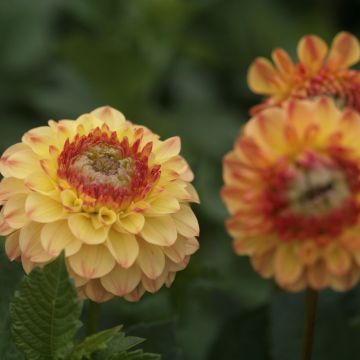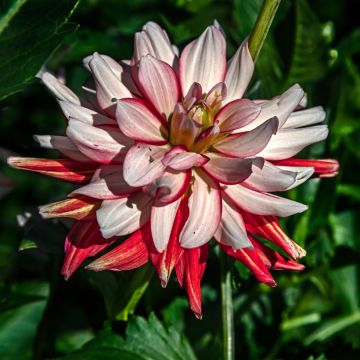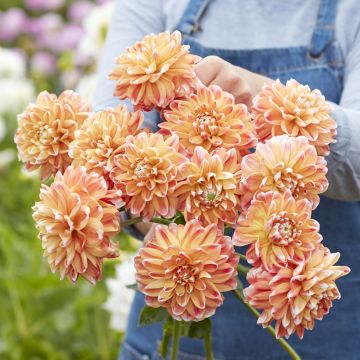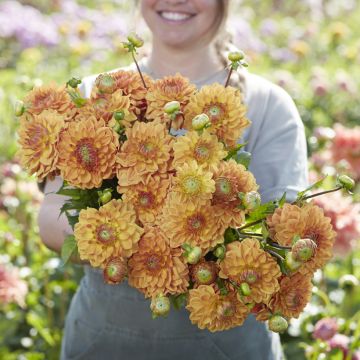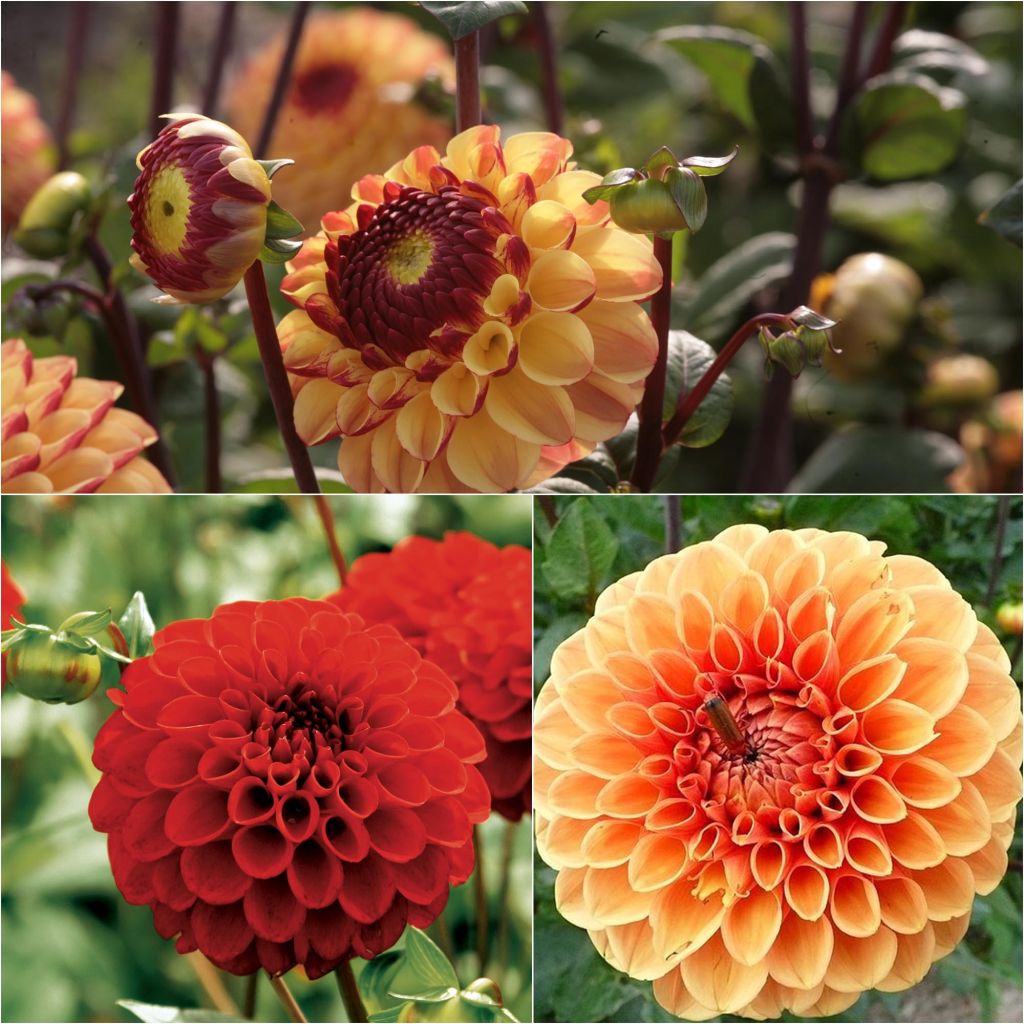

Neck 3 dahlias ball, warm shades
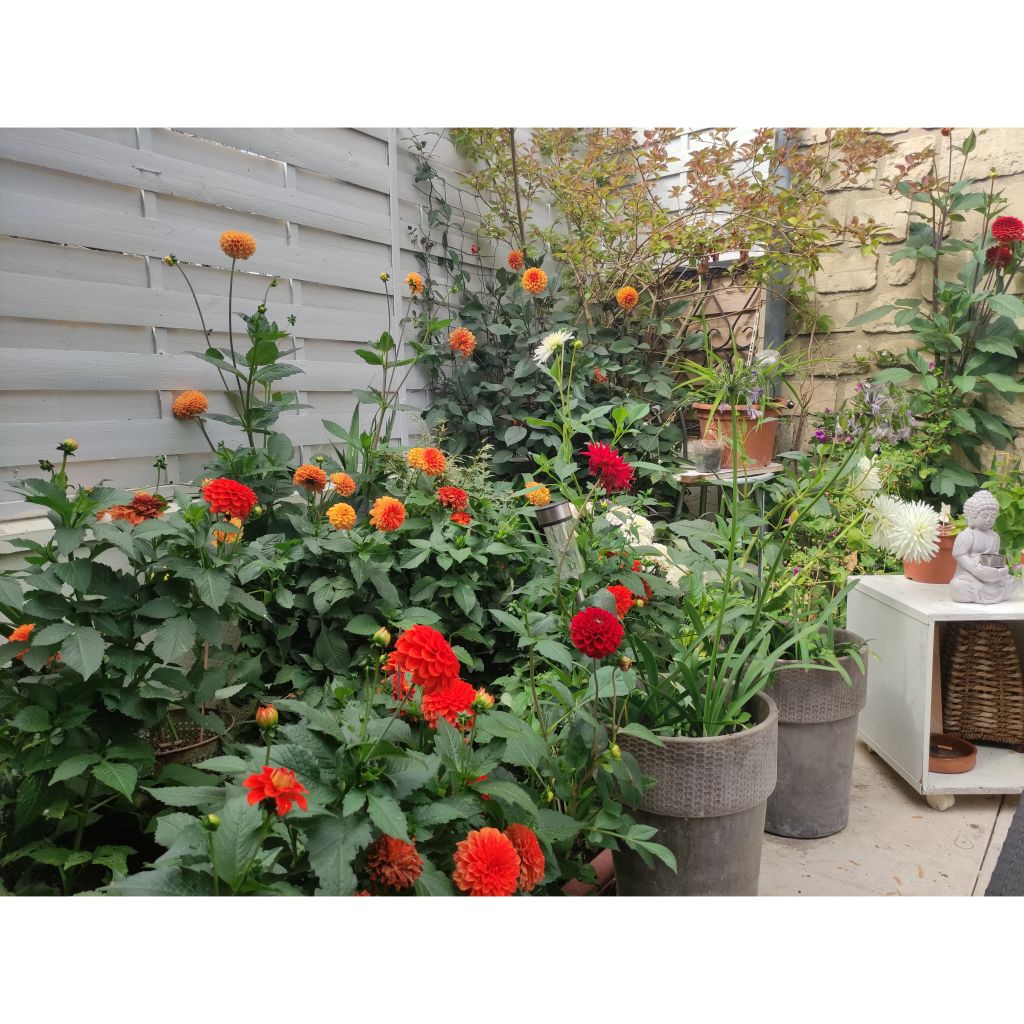

Neck 3 dahlias ball, warm shades
View more pictures
Hide images

Annick M.

Annick M. • 95 FR
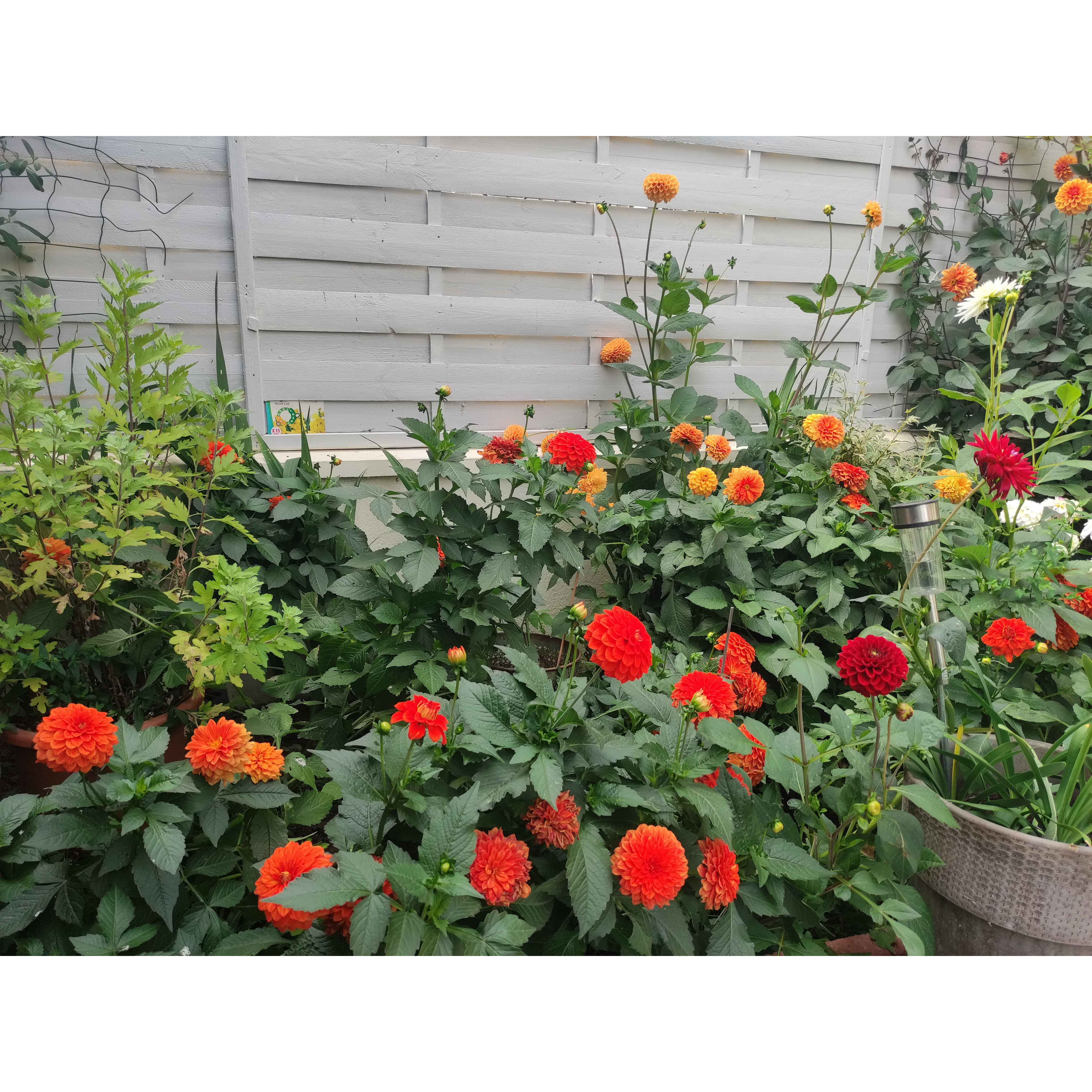
Annick M.

Annick M. • 95 FR
Neck 3 dahlias ball, warm shades
Dahlia Sylvia, David Howard et Red Fox
Tubercles have taken a long time to settle. Flowers rare and with pale colours for the two lightest ones. Will check the porch next summer.
Chistiane P., 29/10/2022
Special offer!
Receive a €20 voucher for any order over €90 (excluding delivery costs, credit notes, and plastic-free options)!
1- Add your favorite plants to your cart.
2- Once you have reached €90, confirm your order (you can even choose the delivery date!).
3- As soon as your order is shipped, you will receive an email containing your voucher code, valid for 3 months (90 days).
Your voucher is unique and can only be used once, for any order with a minimum value of €20, excluding delivery costs.
Can be combined with other current offers, non-divisible and non-refundable.
Home or relay delivery (depending on size and destination)
Schedule delivery date,
and select date in basket
This plant carries a 6 months recovery warranty
More information
We guarantee the quality of our plants for a full growing cycle, and will replace at our expense any plant that fails to recover under normal climatic and planting conditions.
Would this plant suit my garden?
Set up your Plantfit profile →
Collection items (3 plants)
Description
A collection of 3 Dahlias, with radiant and shimmering colors! Their perfectly round flowers, shaped like big pompoms, bloom abundantly for 4 months in a whirl of orange, yellow, red, salmon, and magenta purple, enhanced by their honeycomb texture that plays with light. These Dahlias, carried by well-coloured stems in red or purple, truly shine in shrub and perennial beds, as well as in homemade bouquets with ferns and grass flowers, for example.
This collection consists of:
- 1x Dahlia 'Sylvia' ball: spherical flowers, captivating, with a warm and soft mandarin color. They are made up of multiple petals arranged with millimetre precision, playing beautifully with light. Height: 1 m (3ft)
- 1x Dahlia 'David Howard': flowers of 9-10 cm (4in), precisely organized in countless honeycombs, gently colored in salmon orange and highlighted with magenta purple, with chocolate foliage. This compact plant does not exceed 70-80 cm (28-32in) in height.
- 1x Dahlia ball 'Red Fox': 8 cm (3in) diameter flowers, with petals or ligules forming a dense ball, of a bright and uniform red, with a velvety appearance. The plant forms a leafy clump of about 1 m (3ft) in height.
To encourage repeat flowering, make sure to remove faded flowers, or even better, regularly make large colourful bouquets by combining them with other varieties. With their flamboyant coloured flowers, the dahlias in this collection go particularly well with white and pale yellow flowers, or even blue ones. Combine them with Asters, for example, which bloom at the same time, as well as grass flowers at their peak of beauty, or even Helen's Flowers and Echinaceas. They also allow bouquets to be adorned until late in the season.
As a star plant for borders and herb gardens, Dahlias confidently accompany the most beautiful flowers but are also appreciated alongside vegetable plants. In Mexico, this tuber was first cultivated as a root vegetable for consumption. But its poor taste relegated it to the rank of ornamental plant. Since then, interest in their beautiful exuberance has never waned.
Plant habit
Flowering
Foliage
Botanical data
Dahlia
Sylvia, David Howard et Red Fox
Asteraceae
Cultivar or hybrid
Other Dahlias
View all →Planting and care
Plant your dahlias in the spring in deeply worked soil, enriched for example with crushed bone or dehydrated blood. Place your tuber and crumble the soil well to fill without any air pockets. Your dahlia should be covered with 6 cm (2in) of soil. At the end of planting, pour a litre of water. Water regularly during the first 6 weeks to help with rooting. Dahlias are sensitive to cold, so they need to be overwintered. In November, the first frosts will blacken the foliage, which is the time to dig them up. Carefully remove the tubers. Remove as much soil as possible. Let the foliage dry so that the tuber can replenish its reserves. When the foliage is dry, cut the stems 10 cm (4in) from the tuber. Spread your bulbson newspaper in a box. Store in a frost-free, dry, cool, and dark place.
Planting period
Intended location
Care
Planting & care advice
-
, onOrder confirmed
Reply from on Promesse de fleurs
Haven't found what you were looking for?
Hardiness is the lowest winter temperature a plant can endure without suffering serious damage or even dying. However, hardiness is affected by location (a sheltered area, such as a patio), protection (winter cover) and soil type (hardiness is improved by well-drained soil).

Photo Sharing Terms & Conditions
In order to encourage gardeners to interact and share their experiences, Promesse de fleurs offers various media enabling content to be uploaded onto its Site - in particular via the ‘Photo sharing’ module.
The User agrees to refrain from:
- Posting any content that is illegal, prejudicial, insulting, racist, inciteful to hatred, revisionist, contrary to public decency, that infringes on privacy or on the privacy rights of third parties, in particular the publicity rights of persons and goods, intellectual property rights, or the right to privacy.
- Submitting content on behalf of a third party;
- Impersonate the identity of a third party and/or publish any personal information about a third party;
In general, the User undertakes to refrain from any unethical behaviour.
All Content (in particular text, comments, files, images, photos, videos, creative works, etc.), which may be subject to property or intellectual property rights, image or other private rights, shall remain the property of the User, subject to the limited rights granted by the terms of the licence granted by Promesse de fleurs as stated below. Users are at liberty to publish or not to publish such Content on the Site, notably via the ‘Photo Sharing’ facility, and accept that this Content shall be made public and freely accessible, notably on the Internet.
Users further acknowledge, undertake to have ,and guarantee that they hold all necessary rights and permissions to publish such material on the Site, in particular with regard to the legislation in force pertaining to any privacy, property, intellectual property, image, or contractual rights, or rights of any other nature. By publishing such Content on the Site, Users acknowledge accepting full liability as publishers of the Content within the meaning of the law, and grant Promesse de fleurs, free of charge, an inclusive, worldwide licence for the said Content for the entire duration of its publication, including all reproduction, representation, up/downloading, displaying, performing, transmission, and storage rights.
Users also grant permission for their name to be linked to the Content and accept that this link may not always be made available.
By engaging in posting material, Users consent to their Content becoming automatically accessible on the Internet, in particular on other sites and/or blogs and/or web pages of the Promesse de fleurs site, including in particular social pages and the Promesse de fleurs catalogue.
Users may secure the removal of entrusted content free of charge by issuing a simple request via our contact form.
The flowering period indicated on our website applies to countries and regions located in USDA zone 8 (France, the United Kingdom, Ireland, the Netherlands, etc.)
It will vary according to where you live:
- In zones 9 to 10 (Italy, Spain, Greece, etc.), flowering will occur about 2 to 4 weeks earlier.
- In zones 6 to 7 (Germany, Poland, Slovenia, and lower mountainous regions), flowering will be delayed by 2 to 3 weeks.
- In zone 5 (Central Europe, Scandinavia), blooming will be delayed by 3 to 5 weeks.
In temperate climates, pruning of spring-flowering shrubs (forsythia, spireas, etc.) should be done just after flowering.
Pruning of summer-flowering shrubs (Indian Lilac, Perovskia, etc.) can be done in winter or spring.
In cold regions as well as with frost-sensitive plants, avoid pruning too early when severe frosts may still occur.
The planting period indicated on our website applies to countries and regions located in USDA zone 8 (France, United Kingdom, Ireland, Netherlands).
It will vary according to where you live:
- In Mediterranean zones (Marseille, Madrid, Milan, etc.), autumn and winter are the best planting periods.
- In continental zones (Strasbourg, Munich, Vienna, etc.), delay planting by 2 to 3 weeks in spring and bring it forward by 2 to 4 weeks in autumn.
- In mountainous regions (the Alps, Pyrenees, Carpathians, etc.), it is best to plant in late spring (May-June) or late summer (August-September).
The harvesting period indicated on our website applies to countries and regions in USDA zone 8 (France, England, Ireland, the Netherlands).
In colder areas (Scandinavia, Poland, Austria...) fruit and vegetable harvests are likely to be delayed by 3-4 weeks.
In warmer areas (Italy, Spain, Greece, etc.), harvesting will probably take place earlier, depending on weather conditions.
The sowing periods indicated on our website apply to countries and regions within USDA Zone 8 (France, UK, Ireland, Netherlands).
In colder areas (Scandinavia, Poland, Austria...), delay any outdoor sowing by 3-4 weeks, or sow under glass.
In warmer climes (Italy, Spain, Greece, etc.), bring outdoor sowing forward by a few weeks.





































